necessary equipment to ensure a competent job
Tools Required
The following list of tools are required to ensure you have the necessary equipment to ensure a competent job. The tools are available in several different variances and brands, from different outlets. Over time you will find the tool brand that best suits you.
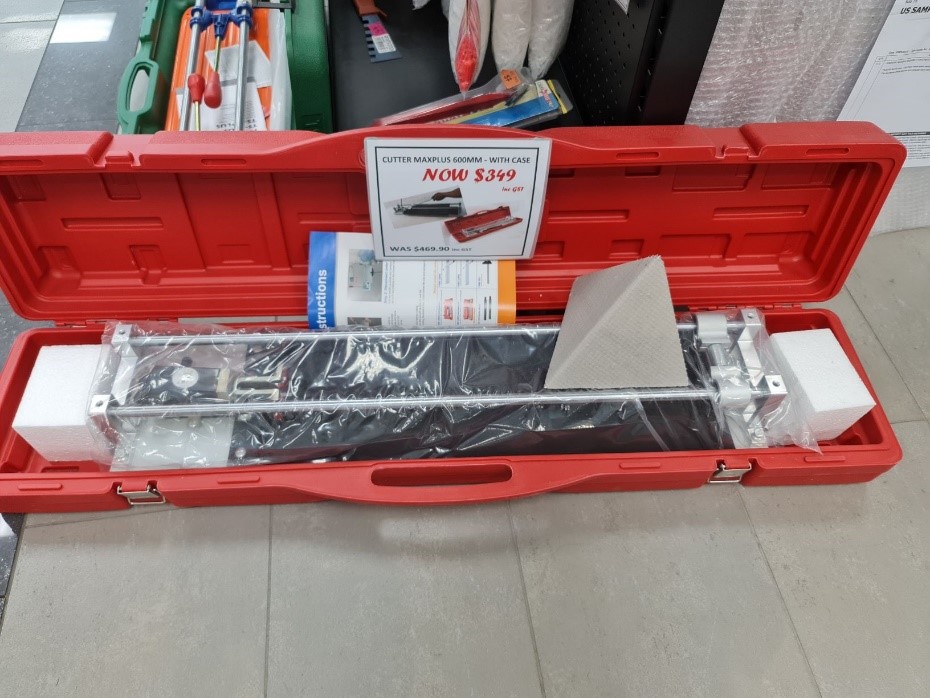
Tile cutters (scribe cutters)
There are many different brands and designs of tile cutters. The ones listed below are of sufficient quality, and for the price, an excellent starting place. Cutter size 600mm.
To start with you will require a cutter that can scribe tiles up to 600mm in length. These are a common size, and the tile cutter below is perfectly suited.
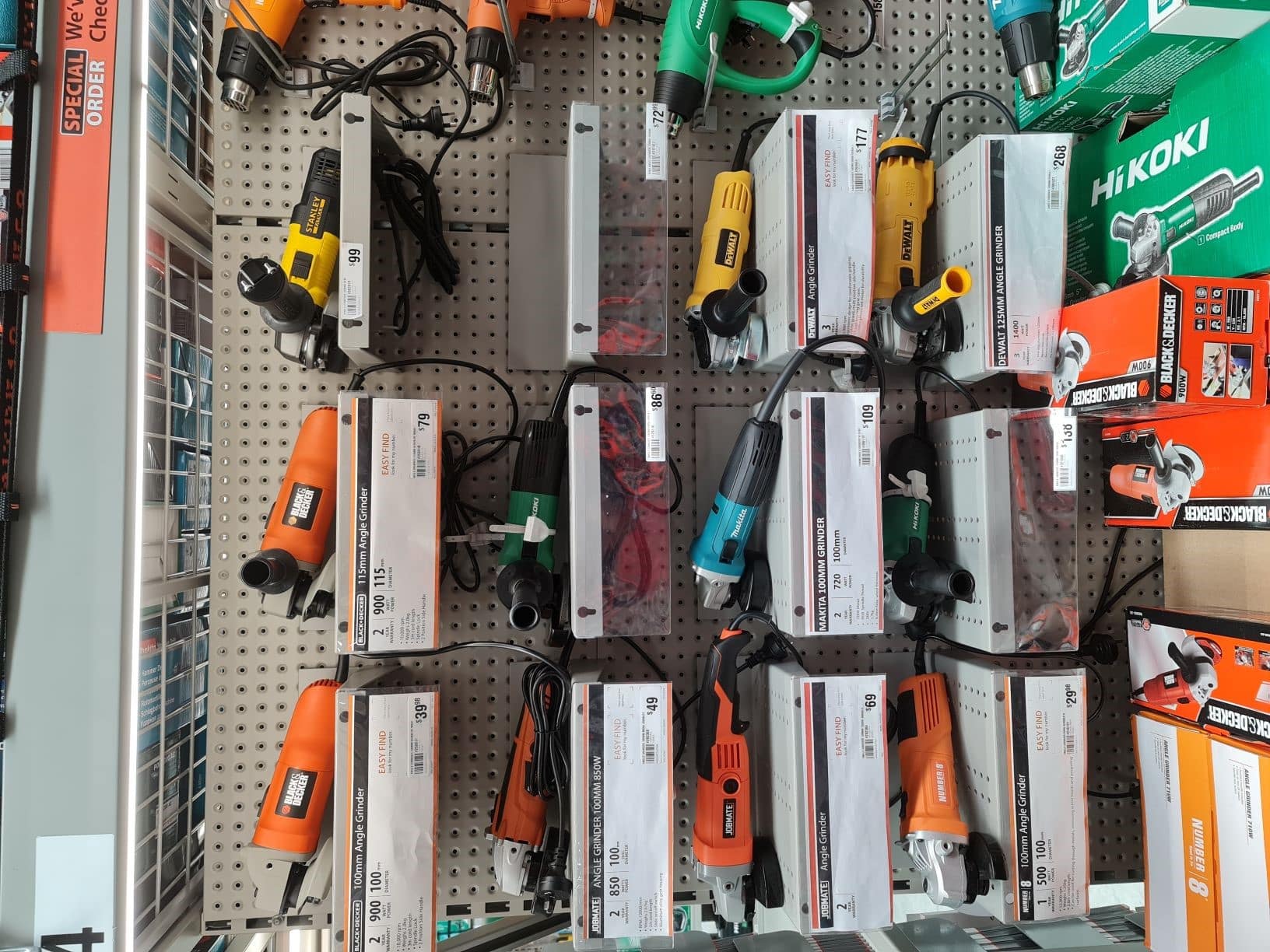
Grinder cost = $80, Diamond grinding blade cost = $60
Tile cutting saw
Tile cutting saw – Once again, there are a vast variety of saws that are available, going up in price to over several thousand dollars. However, a simple, hand-held angle grinder fitted with a diamond cutting blade is sufficient for most tiling jobs. These low-cost grinders are all that we have used over decades of tiling. From commercial jobs to small domestic.
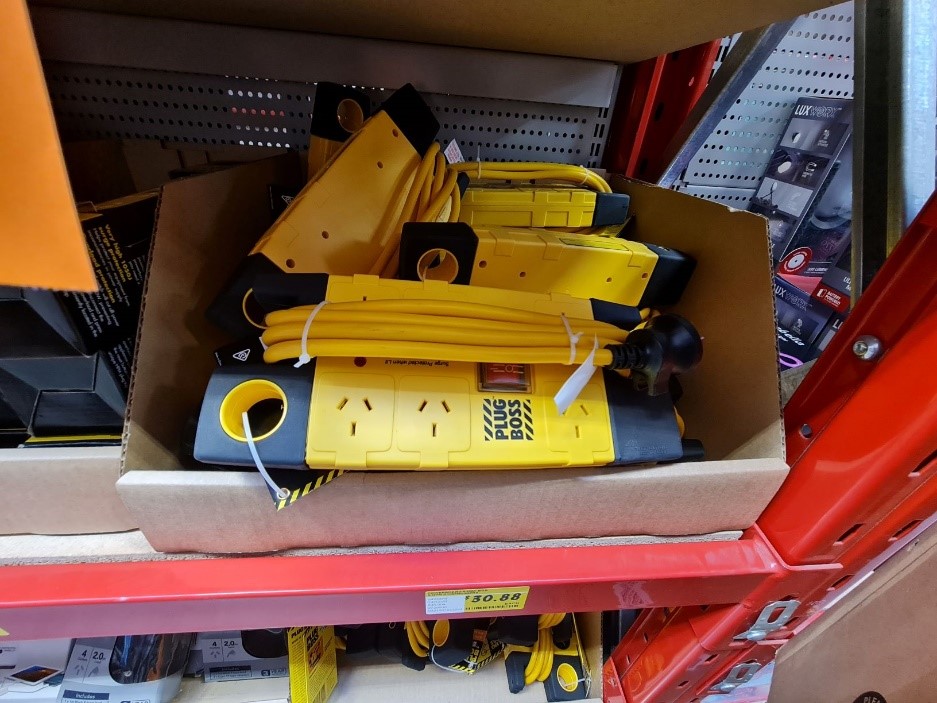
Safety multi power box
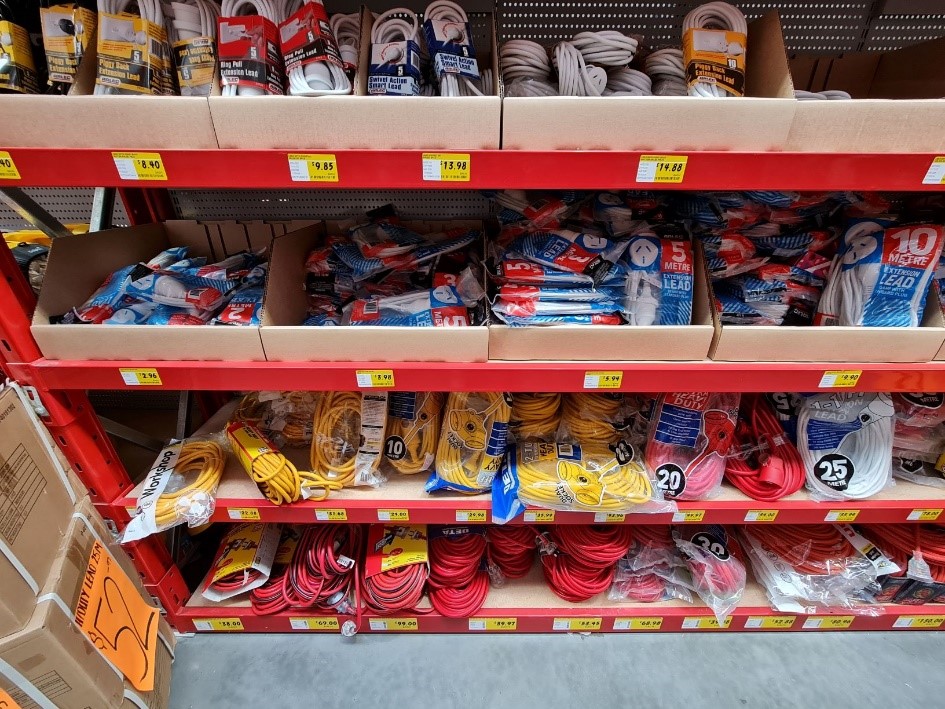
Power leads
When purchasing your power leads ensure they are “Work Safe” standard.
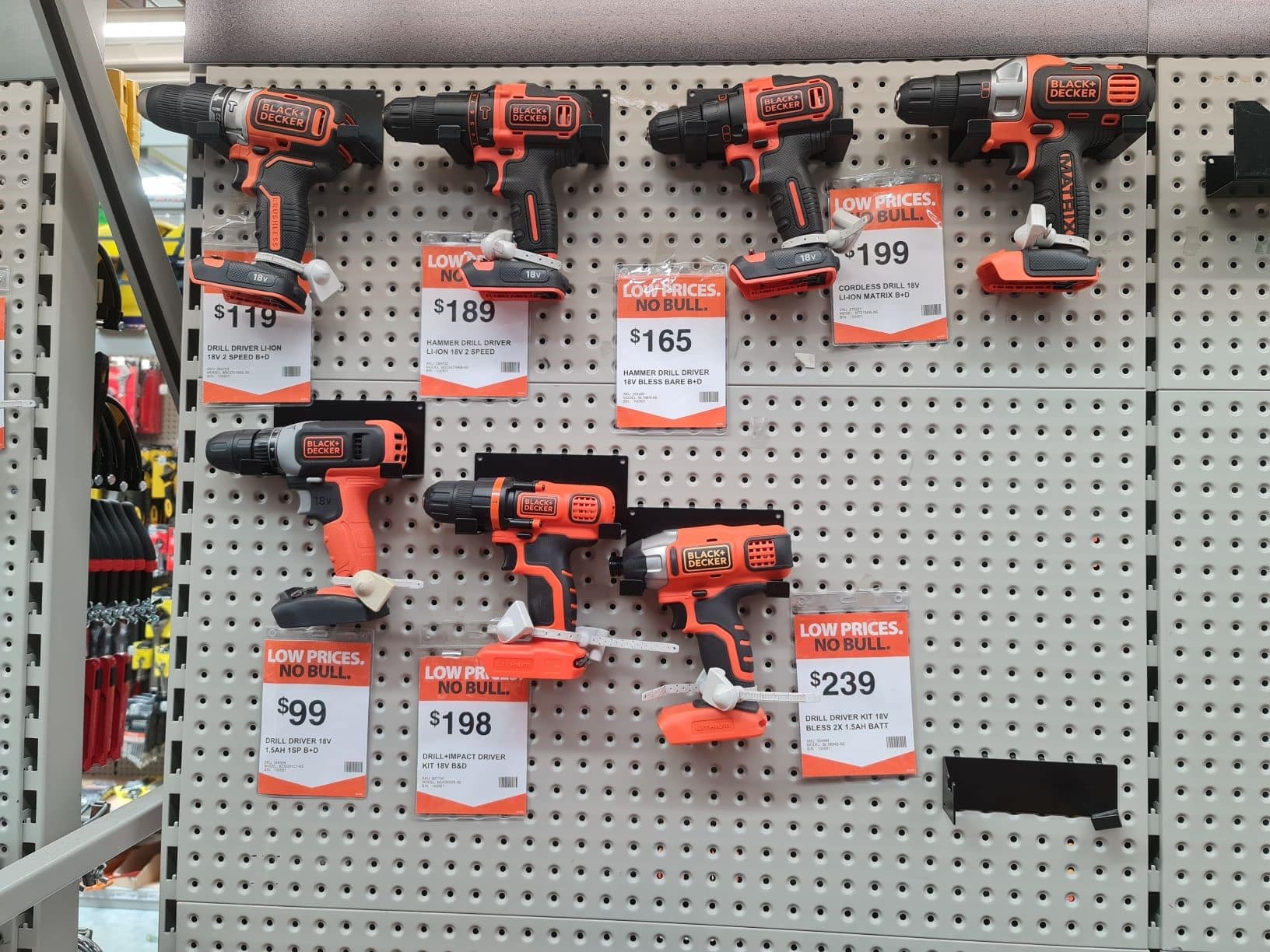
Battery powered drill
Battery powered drill for power-point screw removal.
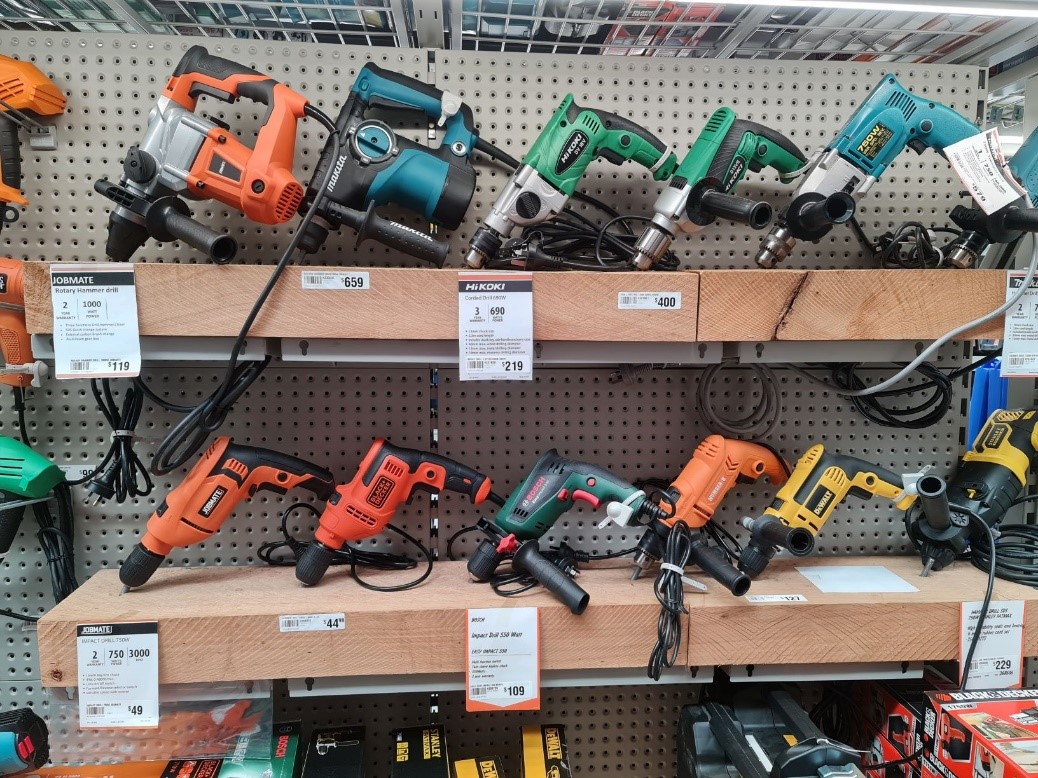
Mixing - hole saw drill
Mixing drill (also used for hole drilling)
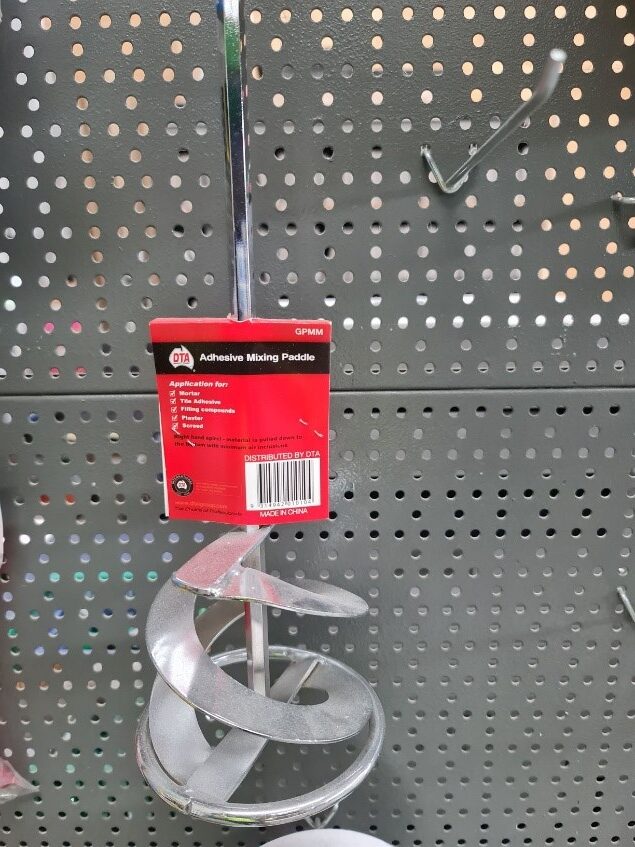
Stirring rod
Mixing stir rod.
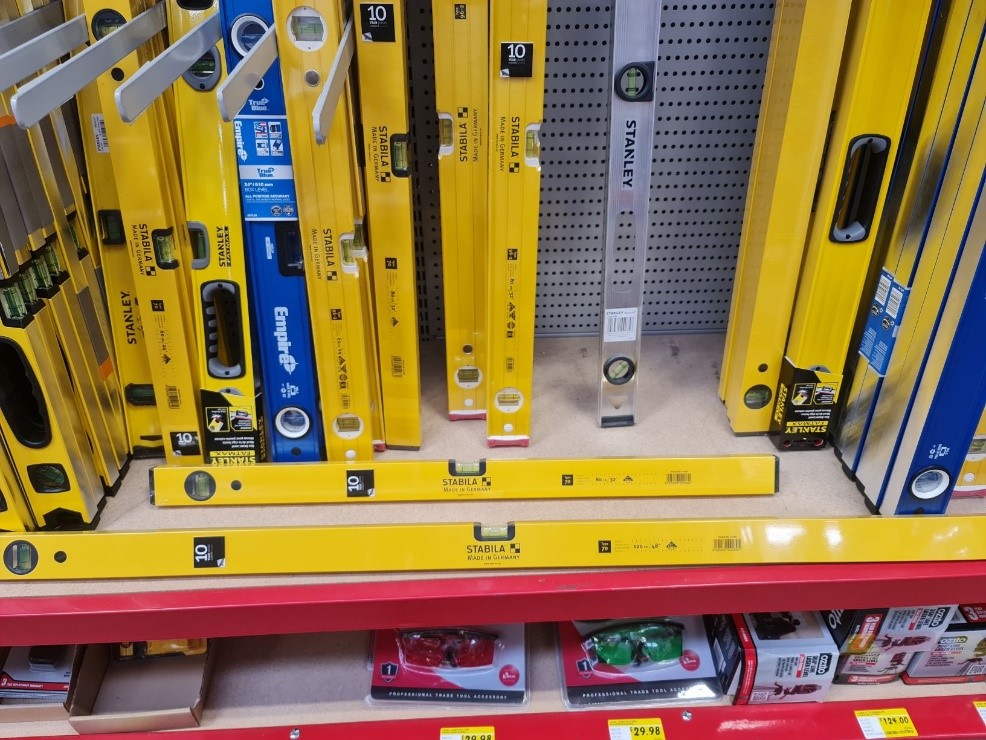
Spirit levels
Spirit levels – 800mm plus a 1200mm
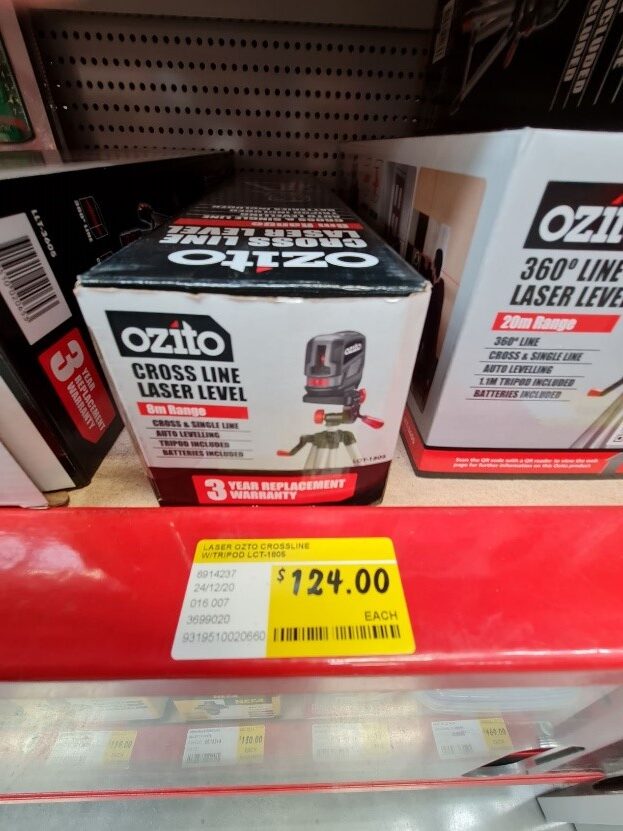
Laser level
Optional
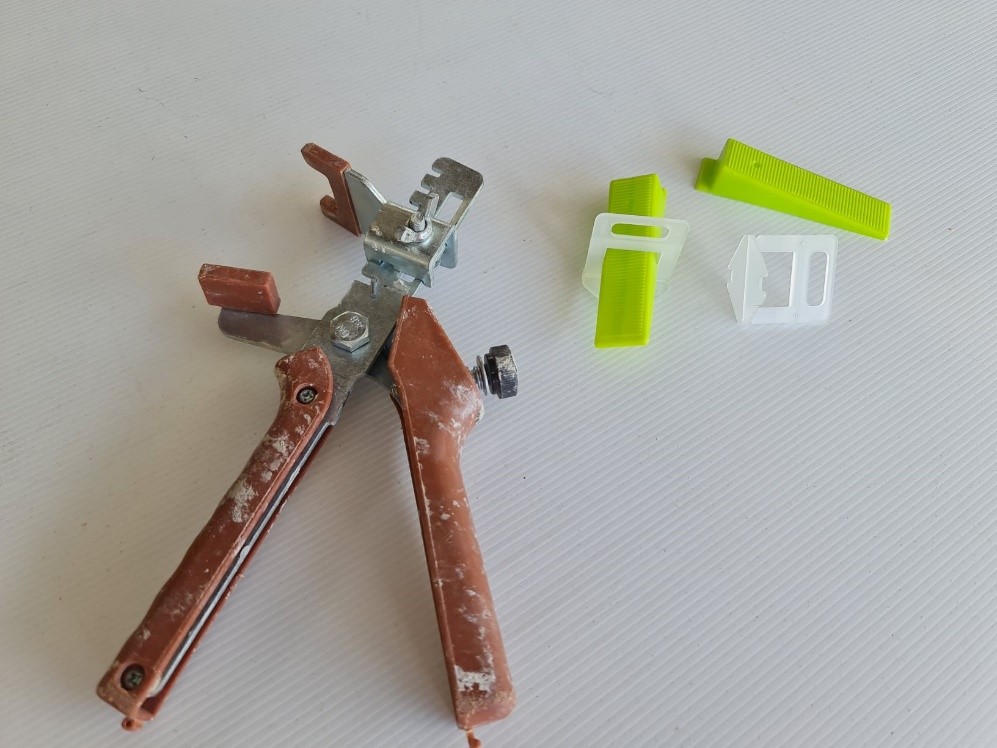
Clips & wedges
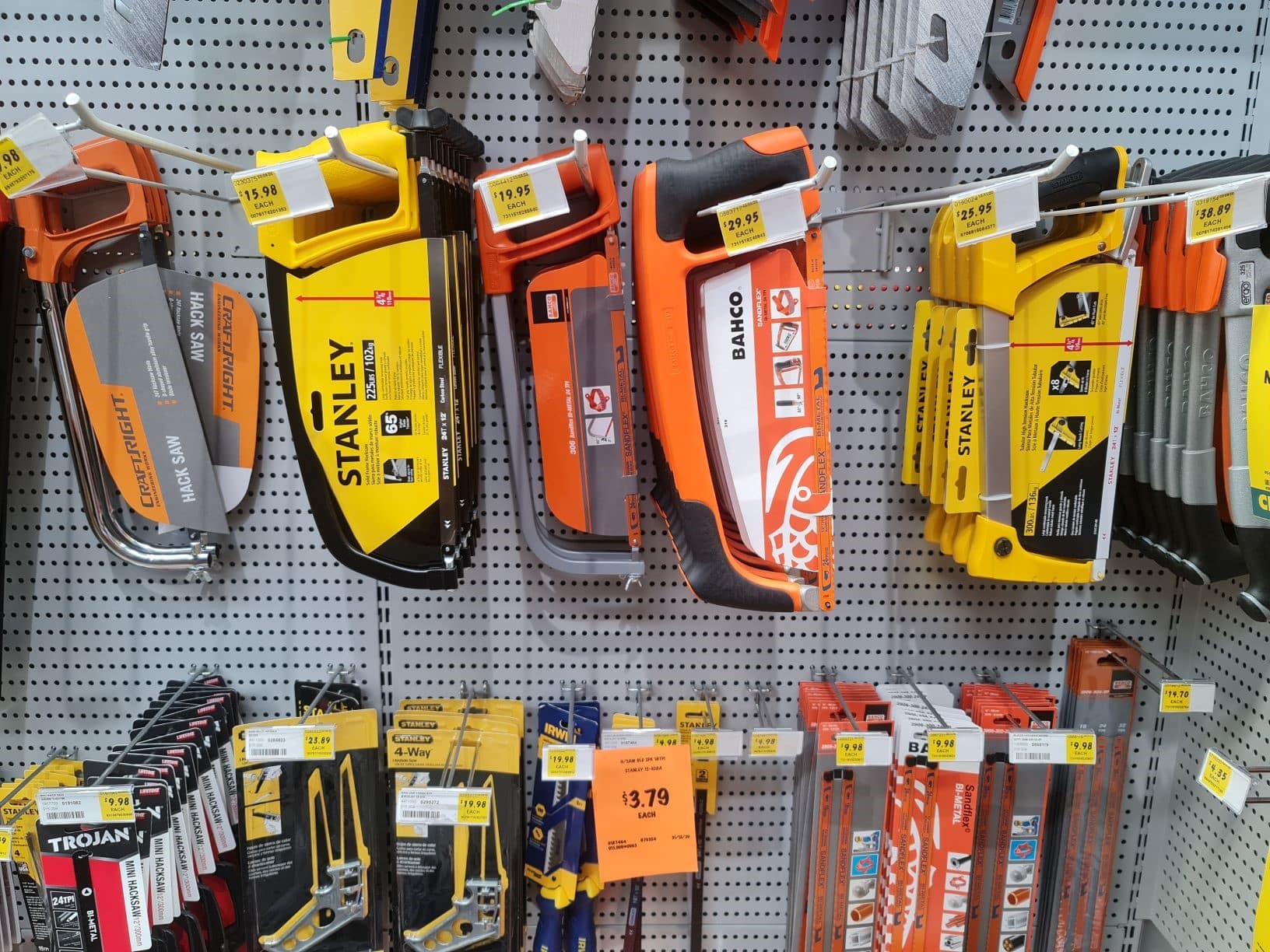
Hacksaw = $20 , Mitre box = $10
Hack saw & Mitre box
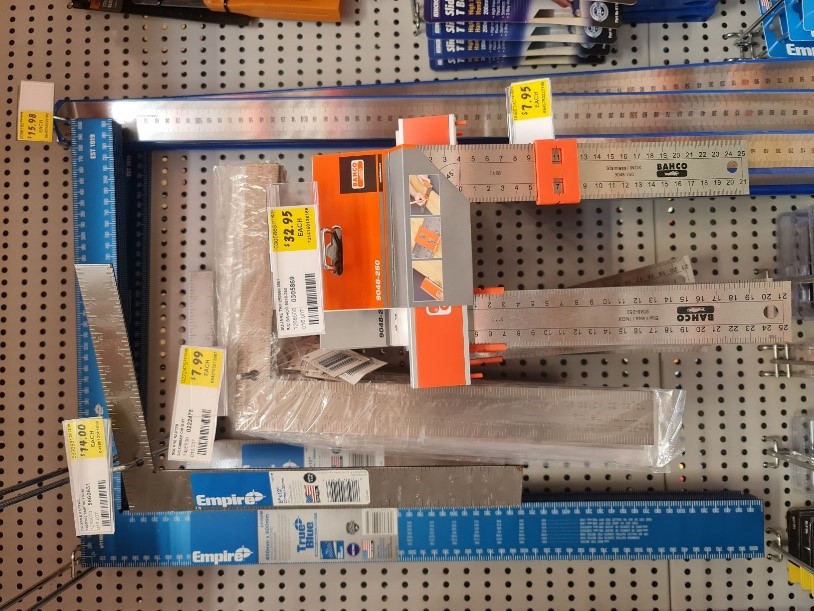
Square
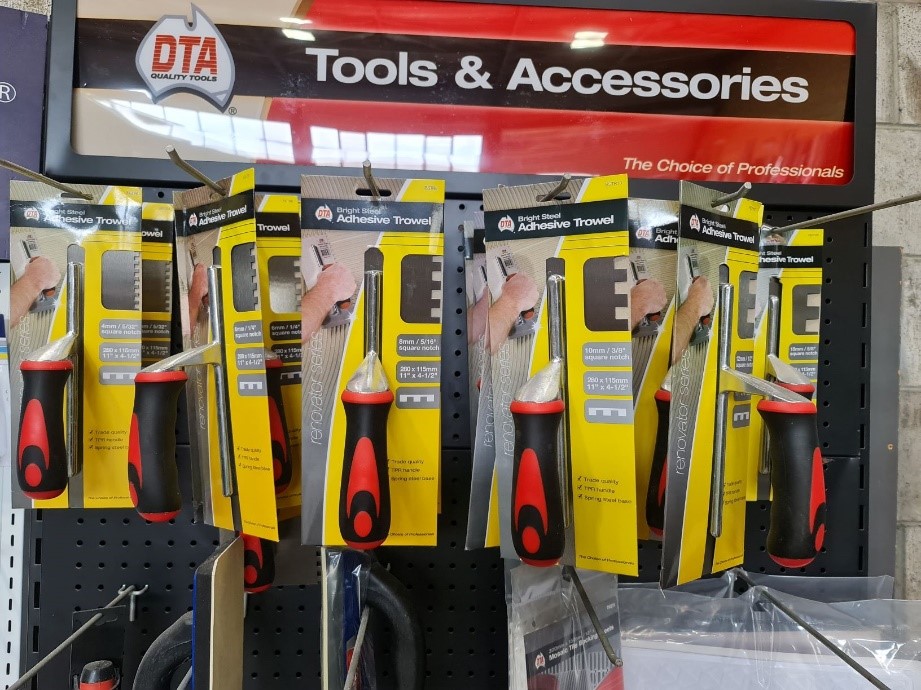
Trowels
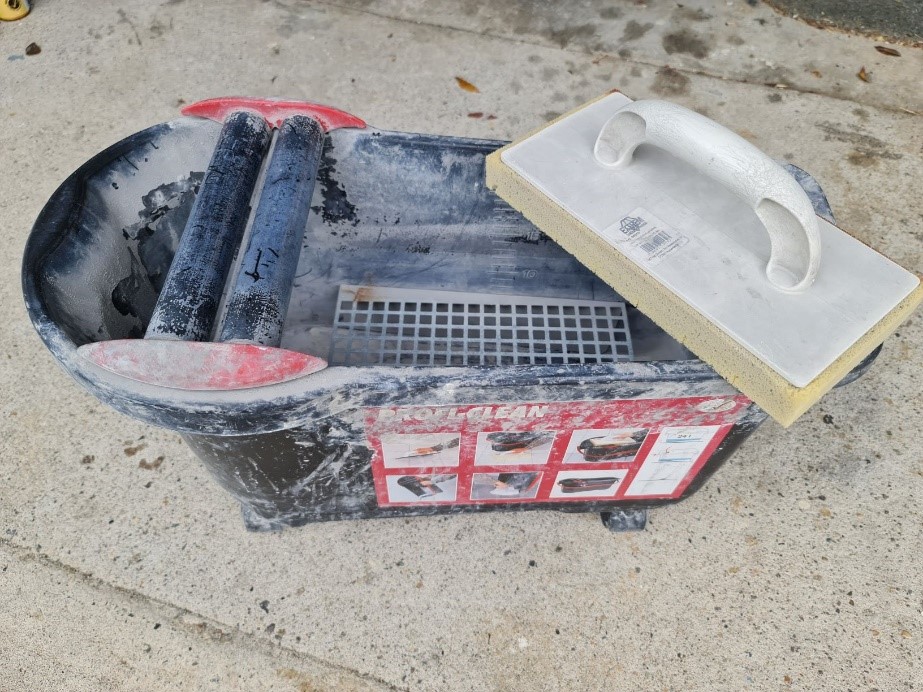
Grouting sponge-mopping bucket set
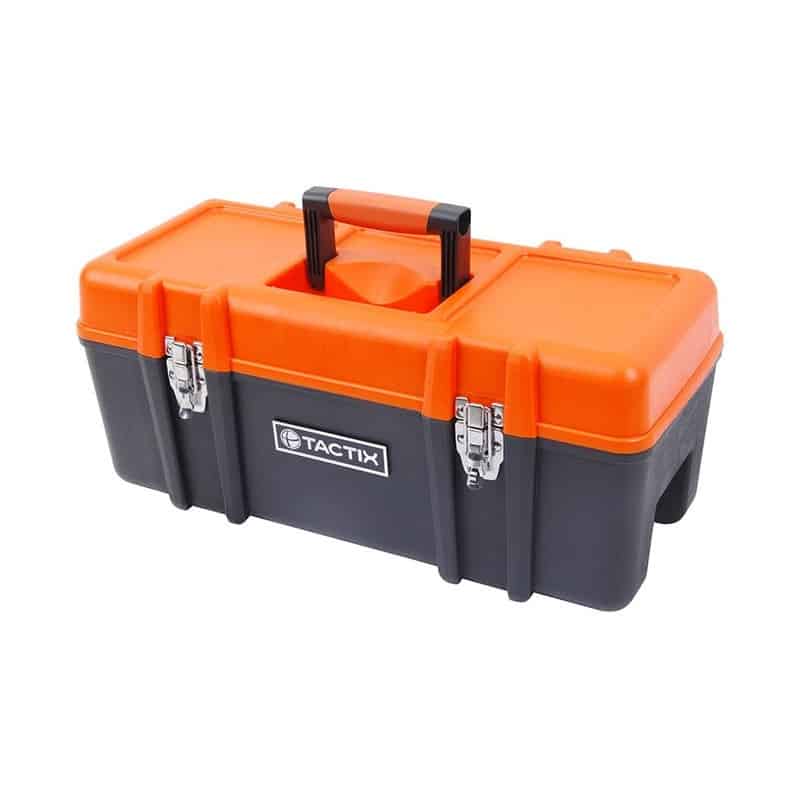
Cost: $215
Tool box
Hammer = $25, cold chisels (various sizes) = $30, screw driver multi box = $25, spatulas = $5 each, blade knife and spare blades = $20, rubber mallet = $10, pencils and marker pens = $10, scissors = $10, pliers = $20, cement sheet cutter blade = $15, tile nipper = $25, chalk line = $20.
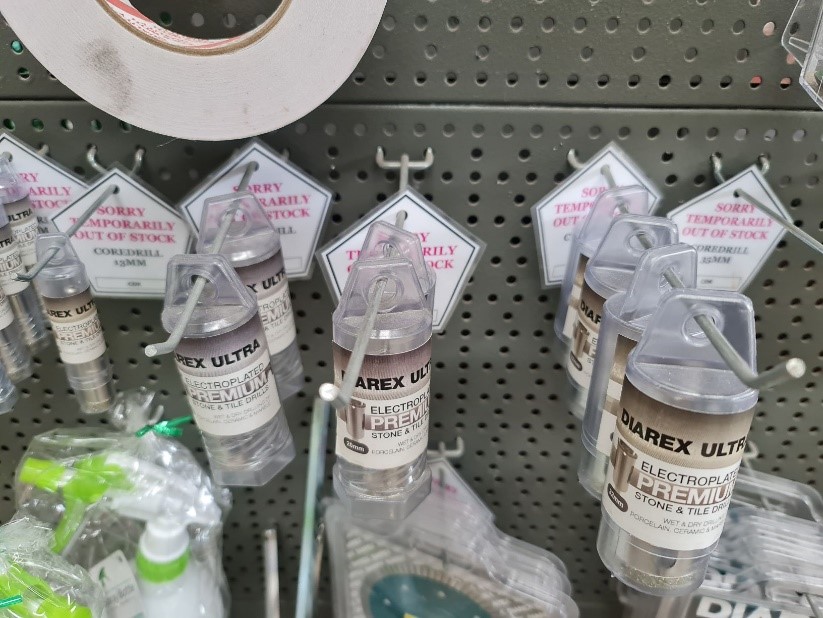
Optional
Hole cutter tips
Hole cutter tips – used in power drill – 30mm, 40mm, 50mm etc
Check list of tools (indicative only)
Bits and pieces :
Masking tape (various widths), rolls of protection plastic, paper towels, plastic buckets, extended length screws for power-points (available from any electrical store),
- Tile cutter 600mm = $350
- Power drill = $80
- Laser level (optional – not included in Price Total) = $150
- Power leads = $30 each
- Power multi box = $30
- Grinder cutter = $100
- Diamond blade for grinder = $50
- Folding workbench tables = $150
- Levels x 2 (1200mm + 800mm) = $100
- Chalk line = $20
- Spacers & wedges = $20
- Plastic clips & wedges = $150
- Trowels x 5 (6mm, 8mm, 10mm, 12mm, 15mm) = $125
- Nippers = $30
- Hammer = $25
- Chisels x 2 = $25
- Pliers = $20
- Square = $30
- Spatulas = $10
- Screw driver set = $25
- Rubber mallet = $10
- Scissors = $10
- Pencils & markers = $10
- Box cutter blade = $10
- Ear muffs & safety glass = $80
- Knee pads = $30
- Rubber latex gloves (box of 50) = $15
- Rollers and tray = $20
- Mitre box & hacksaw = $20
- Measuring tape = $15
- Fibro cutter = $15
- Grouter trowel float = $20
- Grouting bucket and sponge trowel = $100
- Silicone gun = $15
- Paper towels = $3
- Ice block sticks = $3
- Protective plastic drop sheets = $15
- Dust brush & pan = $5
- Broom = $10
- Tile Talk t-shirts x 3 = $150
Total
$1926
Please note – you will still be required to purchase steel capped boots, and work pants.
BEFORE YOU START A JOB
Etiquette
One of the most important tools for a Tile Talk tiler to possess is a high standard of etiquette. And above all, is vital that a client’s home and property is respected. In some cases, clients/homeowners will leave a key out for you so that you can undertake their job while they are not present. Here is a short check list of rules we require you to use as Tile Talk contractors –
- Follow instructions that clients set.
- Ensure pets are considered.
- Do not touch any property that is not part of the job.
- Do not open any doors or wander through the house – stick strictly to the area you are required to work in.
- Avoid staring at photos, paintings or other decorates – concentrate only on the area you are working in.
- Do not help yourself to food, drinks, tea & coffee.
- Ask the owner where the toilet is while collecting instructions for completing the job, and always leave it in the condition you found it.
Preparation
When you arrive at a job, preparation is a critical step that must NOT be excluded.
Preparing the job before starting offers several benefits.
- It provides peace-of-mind for the client, demonstrating you take care in your work, and that you respect the environment you are working in – the client’s home.
- It helps protect the work area from being damaged throughout the tiling process – keeping tools, primers, adhesives and grout from marking benchtops and other surfaces. It also limits scratches.
- It helps protects you from accidental spills and splashes.
- It makes the clean-up process faster, easier, and more effective.
1/ The first thing you must undertake when arriving on a job is to prepare the work area for tiling.
Regarding kitchen benchtops and other similar jobs, you start with spreading and fitting protective plastic drop sheeting around the area that is to be protected from spills and scratches, covering the benchtops, furniture and appliances that may be affected. The protective plastic we prefer comes in rolls and is available from most hardware stores.
2/ The next step is to prepare your tile cutting work areas. Usually, you will have the scribe cutter inside, as close to the job as possible, and your saw cutter outside. In both cases prepare the areas with drops sheets – tarpaulins spread out to capture dust and fragments. Once again, take all care possible to protect the home-owners’ property.
3/ The next step is to check the surface areas to be tiled. Sometimes a sander, or sandpaper may be used to rough the area up on a wall, to ensure better adhesion before priming.
Loose paint and wallpaper should be removed prior to tiling. Sometimes a concrete floor may require grinding to remove old glue or imperfections. You will also need to remove any protruding lumps or bumps that may cause tiles to be pushed out when being laid. You may require a concrete floor to be grinded before tiling starts. You can choose to contract out a floor grinding contractor for this purpose (adding the cost to your quote), or you may choose to purchase a floor grinder and undertake the process yourself. Be aware, a vacuum system is also required to be connected to the grinder to eliminate dust from the work area.
4/When undertaking kitchen splash-back tiling, the next step is to draw pencil lines around any power points. This will act as a guide when you start cutting the tiles in place. Always ensure the power is switched off at the fuse box when undertaking work around power points. And always treat power points as LIVE.
5/ if undertaking floor tiling, check for lumps that may need to be ground down to help with achieving a flatter and cleaner floor finish.
Priming
Once the first preparation steps are considered, you can then prime the areas to be tiled with primer. Primers take around 15 – 30 minutes to dry, so it is important to get straight on to the priming so that you are not held up with drying time. In some cases, you may choose not to use primers – like on some clean concrete floors. But generally, primers are required and improve adhesion to most surfaces. When undertaking waterproofing, priming is required to be undertaken at least a few hours prior to starting, as the surfaces need to be completely dry for the waterproofing tape to stick.
Layout
Layout is one of the most crucial preparation steps. Discuss the layout with the client if possible, fully explaining why you are starting where you are, and how the tiles will fit across the splash-back, floors and walls.
When starting a kitchen splash-back area, consider carefully whether you will start with a full tile at an end, or whether you will position the tiles centered, with equal cuts both sides. Also consider the height of the tiling, and how the tiles will fit at the tops and sides of the job. Sometimes you will consider ending the top of the job with an extra row of tiles, or a row less, depending on how they meet the cabinetry etc.
Which-ever way you choose to set the tiles out, do make sure it is thought out, and when comparing the size of the piece that will be cut to the walls, that the biggest cut tile portion is selected. ALWAYS double check your layouts, as mistakes on calculations can sometimes happen.
Always consider your start point may need to be moved across by half a tile to ensure a larger cut is fitted to each end or each side, eliminating a small and ugly cut against outside edges. The closer cuts are to full tiles, the better. Small slits as cuts are undesirable.
However, at times, there is no way to avoid small slither cuts, so long as the bigger, more prominent main walls – runs – are receiving the attention for as bigger cuts as possible.
Tile grain and arrow direction
Another crucial part of layout is paying attention to the grain, and to the pattern of the tiles. The direction that the tiles are to be laid in is often indicated on the back of the tiles with an arrow. Ensure you check the back of each tile, and if arrows are imprinted into the back of the tile, make sure you lay them running in the same direction for the entire job.
Please note, sometimes the arrow direction does not match the grain direction of the tile. Always be willing to oppose the arrow direction if the angle of the grain looks best in the opposite direction of the arrow.
Cutting Tiles
There are two ways we cut tiles. The first is by using a scribe cutter and the other is using a grinder fitted with a diamond blade or a bench saw set up with a diamond blade. Some bench saws are designed to be water-cooled, depending on what tiles are to be cut. Water-cooled wet saws are particularly good for cutting marble and slate, but we tend to avoid working with stone.
There are a variety of scribe cutter models and brands available for cutting ceramic and porcelain tiles. Ceramic wall tiles have a softer, less dense composition than porcelain. Ceramic floor tiles can have a fairly hard body, but the porcelain tiles are currently the most dense tiles in the industry today. Porcelain floor and wall tiles are far more prevalent in the housing industry than they were 20 years ago, although ceramic/biscuit bodied wall tiles still being produced today.
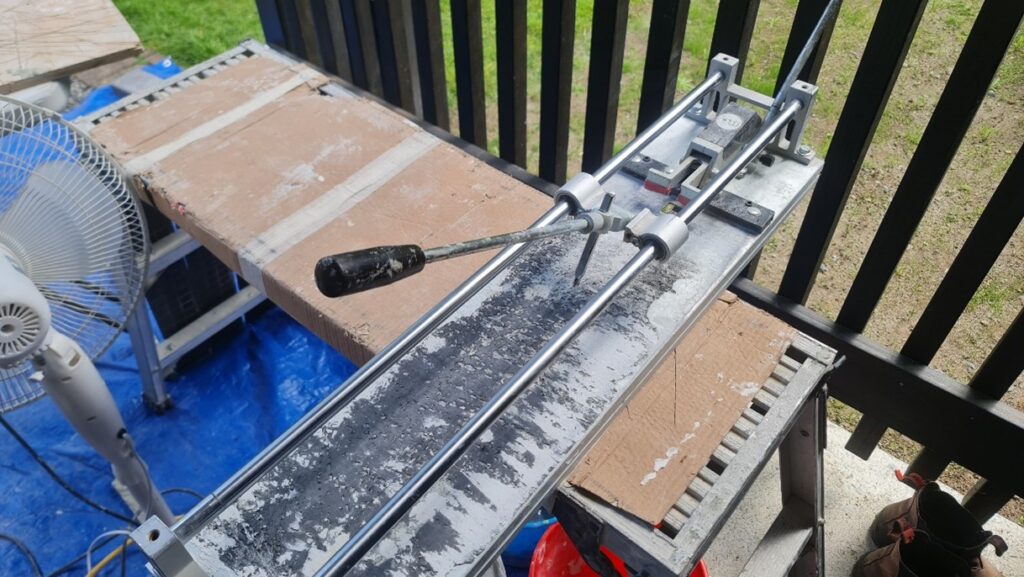
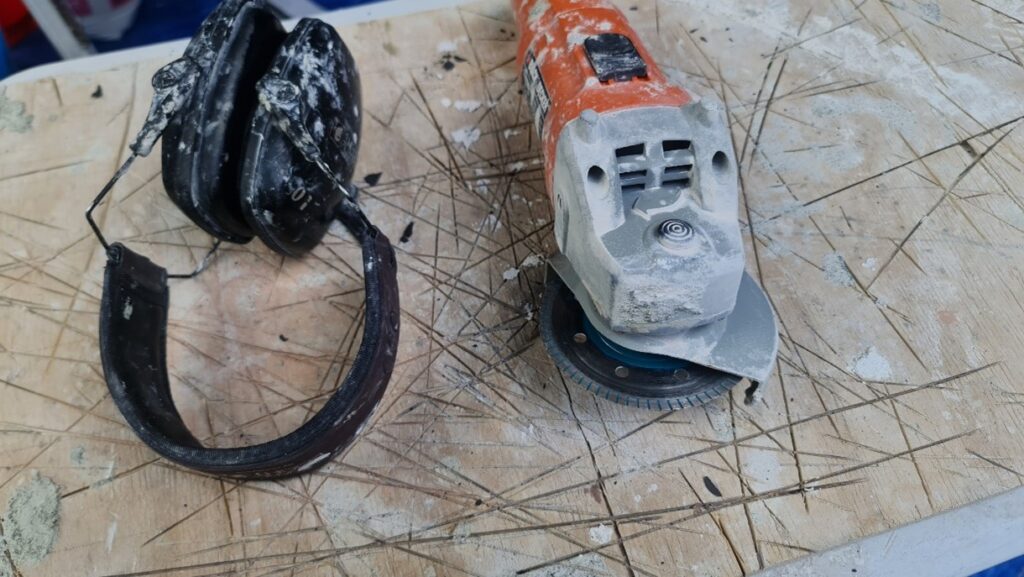
Adhesives & Grouts
There is a large variety of adhesives and grouts available to a tiling contractor.



Most of the products are of high quality and reliability. Often, the brand you will choose to use is one that your local tile shop stocks.
For most splash-back work you will choose to use premixed adhesives like Ardex D2 or Construction Chemicals TileMastic, which are available in 20 – 22kg buckets.
Premixed 15 & 20 litre drums of premixed tile adhesive
The pre-mixed glues are convenient, but they are not suitable for use with dense tiles that are being fitted to non-porous surfaces because they won’t set. In the case of dense tiles being laid to non-porous surfaces (painted walls etc) you will use cement-based glues that require mixing with water. These glues will set over 24 hours regardless of the porosity of the surfaces.
In the case of dense tiles being laid to non-porous surfaces (painted walls etc) you will use cement-based glues that require mixing with water. These glues will set over 24 hours regardless of the porosity of the surfaces.
20KG bag of Ardex X52 rubber modified cement-based glue



At some stage you will want to purchase a tile mixer. The mixer is used to stir cement-based, powdered adhesives with water. They make life a lot easier than mixing by hand and they result in providing a glue mix that has excellent, smooth consistency.


The next steps
We recommend you review all information contained within Stage 1 of this training course several times before undertaking the on-line questionnaire.
Stage 1 covered the primary requirements and introduction to the course.
Stage 2 gets into the processes of tiling, with stage 3 focusing on invoicing, quoting, advertising, insurances, and business registration etc.
